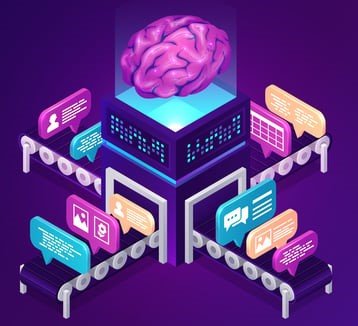Rule-Based Chatbots and AI-Powered Chatbots: Differences, Advantages, and Use Case Variations
Business needs are important to choose the right chatbot solution, let's see below!
October 1, 2023
Gizem Argunşah

Chatbots are a powerful technology that assists businesses and organizations in automating customer service, communication, and business processes. However, chatbots can be developed under two different approaches: rule-based chatbots and AI-powered chatbots. In this article, we will explore the differences, advantages, and use case variations of these two approaches.
Rule-Based Chatbots: Working with Rules and Scenarios
Rule-based chatbots operate using predefined rules and scenarios. These rules dictate how the chatbot should respond to specific questions and which steps it should follow. Here are the differences, advantages, and use case variations of rule-based chatbots:
Differences
Rule-based chatbots work based on a specific set of rules and recognize text that conforms to these rules. They do not involve artificial intelligence learning processes.
These chatbots are typically specialized in a specific topic or task and are designed to execute a particular process.
Advantages
They are more predictable because they operate based on specific rules or scenarios.
They are effective in executing specific tasks or processes and tend to provide accurate results.
They can offer more control over data privacy and security because they usually do not handle sensitive data.
Use Case Variations
Rule-based chatbots are used for tasks such as answering frequently asked questions, performing specific tasks, or providing specific information.
User interactions are more specific and limited, often based on a predefined scenario.
AI-Powered Chatbots: Learning and Understanding Capability
AI-powered chatbots operate using machine learning and natural language processing (NLP) technologies. These chatbots learn to understand user text and can generate more complex and natural language responses. Here are the differences, advantages, and use case variations of AI-powered chatbots:
Differences
AI-powered chatbots can analyze and understand text-based data, grasp the context of language, and learn from interactions.
Through learning processes, they can engage in more natural and diverse interactions with users.
Advantages
They are more flexible and customizable as they can handle more complex text.
They can provide users with more diverse and personalized responses.
They can analyze user interactions better and offer data-driven recommendations.
Use Case Variations
AI-powered chatbots are often used across a wider range of functions, including customer service, marketing, sales, and more.
User interactions are more free-form and unrestricted, not tightly tied to predefined scenarios.
Rule-based chatbots and AI-powered chatbots offer different strengths and use case scenarios. Businesses and organizations should evaluate which type of chatbot is more suitable based on their needs and goals. Both approaches can provide significant advantages to businesses, including improved customer service, business process automation, and enhanced communication.
Try free demo here!
